- Home
- Military & Defense
- Saint Death: The secretive and sinister 'cult' challenging the power of the Catholic Church
Saint Death: The secretive and sinister 'cult' challenging the power of the Catholic Church
Santa Muerte likely originates from Europe, arriving in the New World with Spanish conquistadors.

Many elements of Catholicism were incorporated into Santa Muerte worship by indigenous people and later others in Mexico, with "previously unholy images of the Grim Reaper supercharged by traditional Catholic practices of devotional prayers and votive candles."
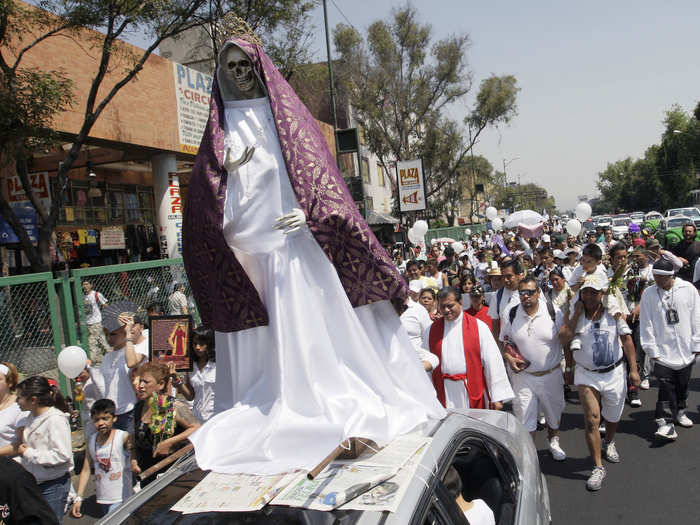
Source: The National Catholic Review
By the 18th century, Catholic leadership realized that the reaper figure had become a venerated figure among indigenous people. The church elected to destroy Santa Muerte shrines, and the sect faded from public view until the mid-20th century.
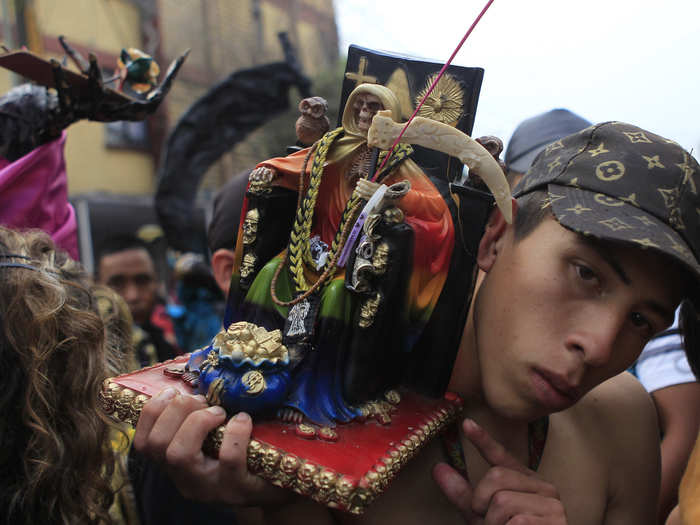
Source: AFP
By the 1980s, members of drug cartels and other criminal groups in Mexico had embraced Santa Muerte.
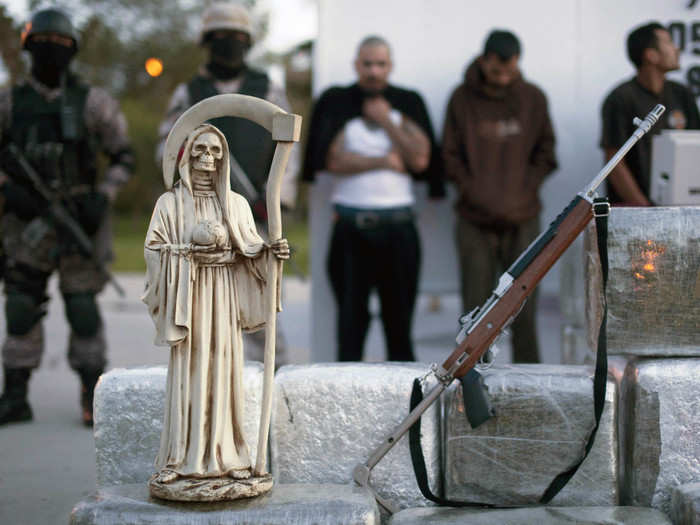
Source: The National Catholic Review
Santa Muerte had a revival in 2001, when, according to AFP's Laurent Thomet, a woman called Dona Queta "brought her skeleton out in the street in Mexico City's rough neighborhood of Tepito." People soon flocked to the shrine.
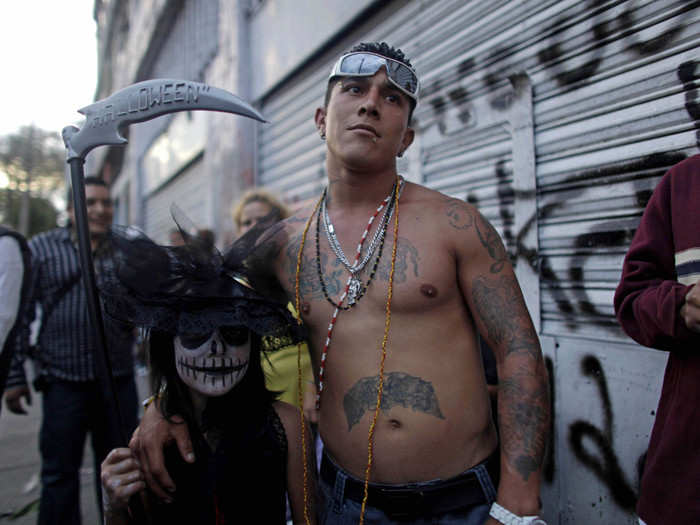
Source: AFP
The heart of her faith is in Tepito," writes journalist Ioan Grillo, "a crowded quarter [of the city] that dates back to before the Spanish conquest ... There is also a never-ending collection of Santa Muerte memorabilia in stalls and entire shops devoted to her.
![The heart of her faith is in Tepito," writes journalist Ioan Grillo, "a crowded quarter [of the city] that dates back to before the Spanish conquest ... There is also a never-ending collection of Santa Muerte memorabilia in stalls and entire shops devoted to her.](https://staticbiassets.in/thumb/msid-51451024,width-700,height-525,imgsize-132012/the-heart-of-her-faith-is-in-tepito-writes-journalist-ioan-grillo-a-crowded-quarter-of-the-city-that-dates-back-to-before-the-spanish-conquest-there-is-also-a-never-ending-collection-of-santa-muerte-memorabilia-in-stalls-and-entire-shops-devoted-to-her-.jpg)
Source: "El Narco: Inside Mexico's Criminal Insurgency" by Ioan Grillo
Ecatepec is the birthplace of Santa Muerte," says Brother Parka, a 58-year-old Santa Muerte spiritual guide, referring to a heavily populated municipality north of Mexico City. "We had to build the National Congregation of the Santa Muerte because the cult has grown so much, it is immense.
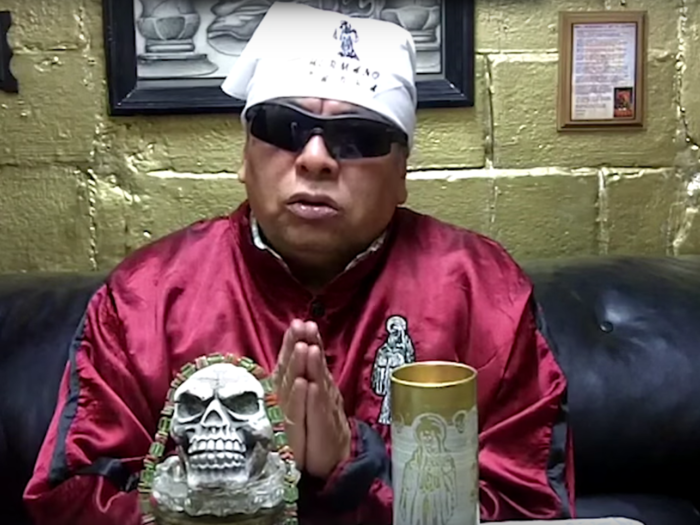
Mexican news site Animal Political wrote in mid-February:
[Brother Parka] insists that Ecatepec is the place with the most devotees in Mexico for two reasons. The first is obvious: Ecatepec is the most populated (and perhaps the most overpopulated) municipality in Latin America, with more than 1.5 million inhabitants. And second, "because here the people have faith and are in need of believing in something," Brother Parka says.
Especially since the municipality accumulated a total of 354 homicides in 2015 alone, according to Mexico's National System of Public Security.
In addition, Brother Parka points out that Ecatepec is the nerve center of a "Santa Muerte corridor," which runs from the Line 2 of the Metro in this Mexico State municipality through several colonies in Mexico City where the cult is also deeply rooted, like Morelos, Peralvillo, Santa Julia, and the neighborhood of Tepito, which is also a bastion of the Muerte.
Source: Animal Politico/Insight Crime
The macabre imagery and underground practices of Santa Muerte, also called "the boney one" or "the white lady," have led many to associate the sect with the criminal underworld.

Source: The National Catholic Review
And drug traffickers have certainly taken to the faith.
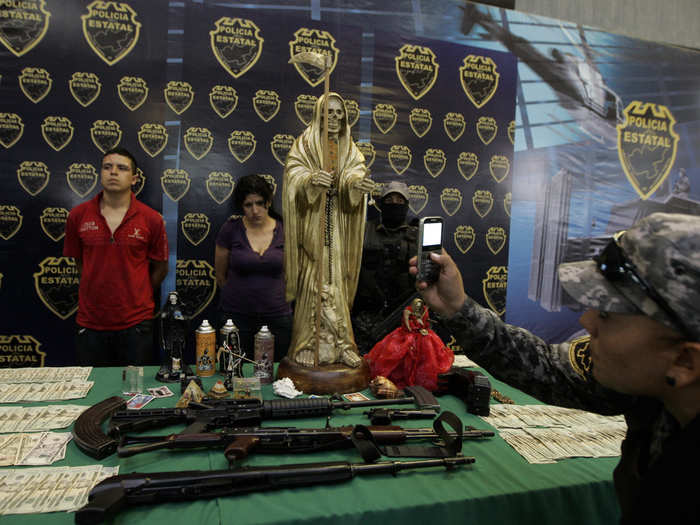
Shrines to Santa Muerte are often found in the homes and hideouts of Mexican drug traffickers.
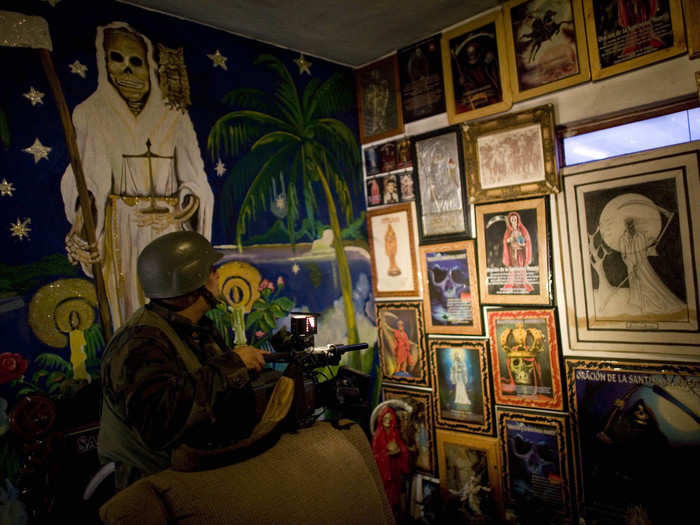
Drug traffickers and other criminals have incorporated Santa Muerte imagery into their lifestyle and theatrics.
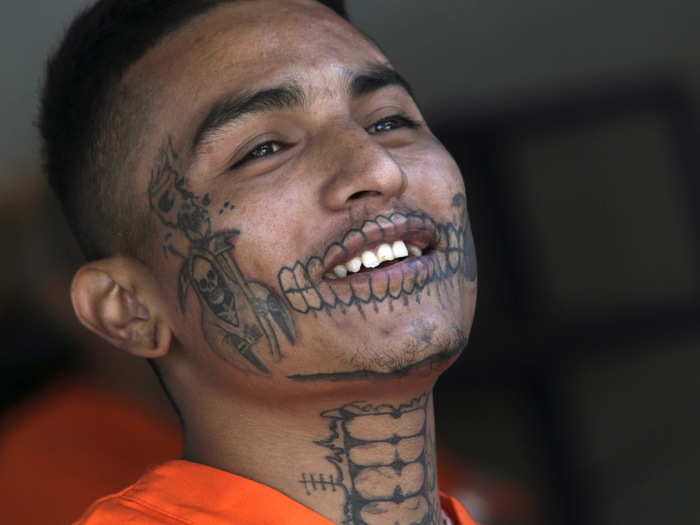
Criminals have also invoked Santa Muerte practices in more grisly public displays.
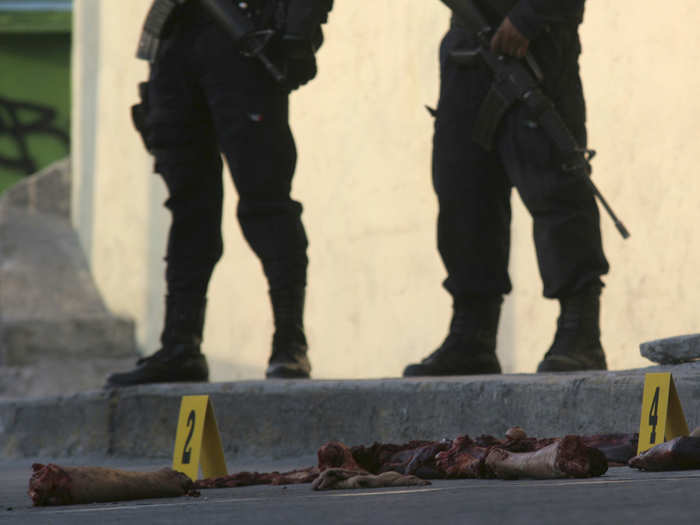
The Zetas cartel built numerous shrines to Santa Muerte in their territory in northeast Mexico, according to Grillo. Two shrines were also prominently located outside the hometown of Knights Templar drug lord Servando "La Tuta" Gomez.
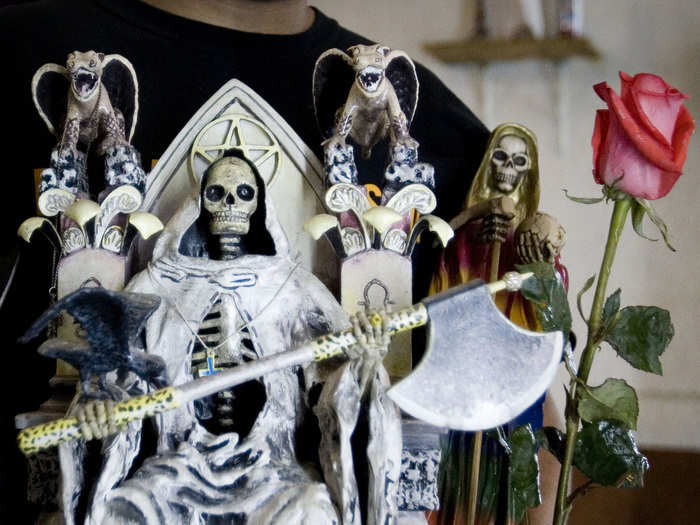
Sources: "El Narco: Inside Mexico's Criminal Insurgency" by Ioan Grillo AFP
According to Chesnut, the disorder and bloodshed brought on by the war on drugs initiated in Mexico a decade ago "clearly helped accelerate the devotion to Santa Muerte."
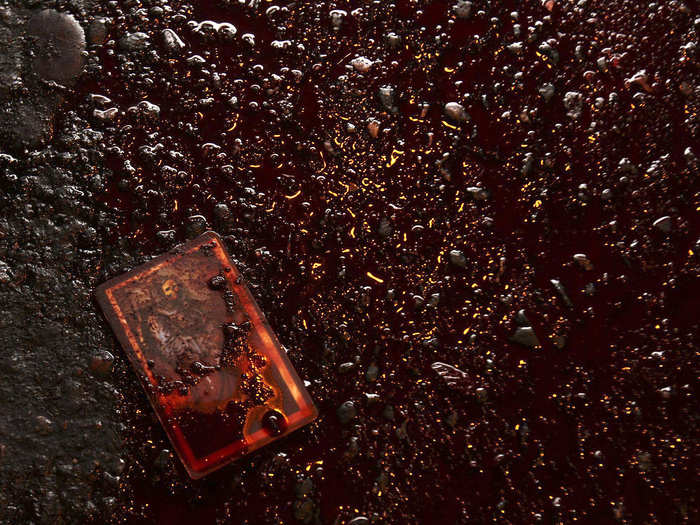
Source: The National Catholic Review
But, according to Chesnut, Santa Muerte is not only embraced for nefarious reasons, and criminals are not the only ones who venerate her.
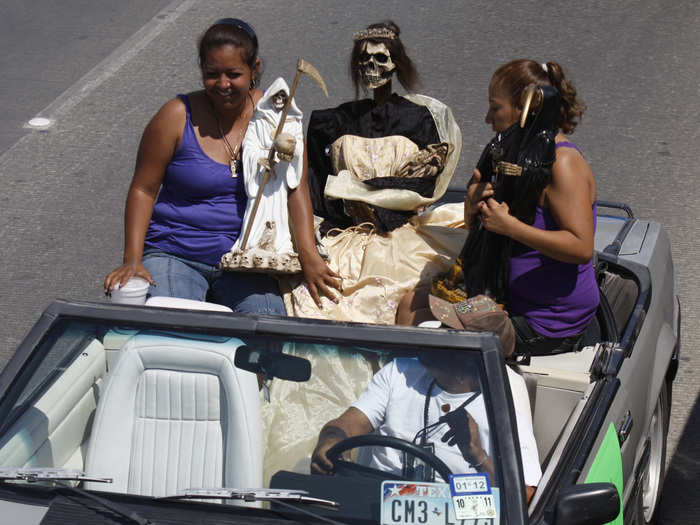
The close association of Santa Muerte with criminal activity has even been repudiated by a US appeals court.
Rafael Goxcon-Chagal and Maria Vianey Medina-Copete were convicted in August 2012 for trafficking methamphetamine. Authorities say a Santa Muerte prayer card was found with the couple during a traffic stop that led to their 2011 arrests.
The 10th US Circuit Court of Appeals ruled on July 2, 2014, that a Santa Muerte expert tainted the convictions by testifying that the folk saint was "a very good indicator of possible criminal activity," according to The Associated Press.
To the appeals court, the expert's testimony was close to "psychobabble and substantially influenced the outcome" of the case.
"Santa Muerte has been used as evidence and used as probable cause in some cases," Chesnut told the AP. "But she is not just a narco saint, and many of her devotees aren't involved in criminal behavior."
Sources: AFP, The Associated Press
"While narcos pray to Santa Muerte for help in annihilating their enemies or making sure their cocaine shipments safely get to places like Chicago, most people plead for help in love, money, health and other non-criminal things," writes Thomet.
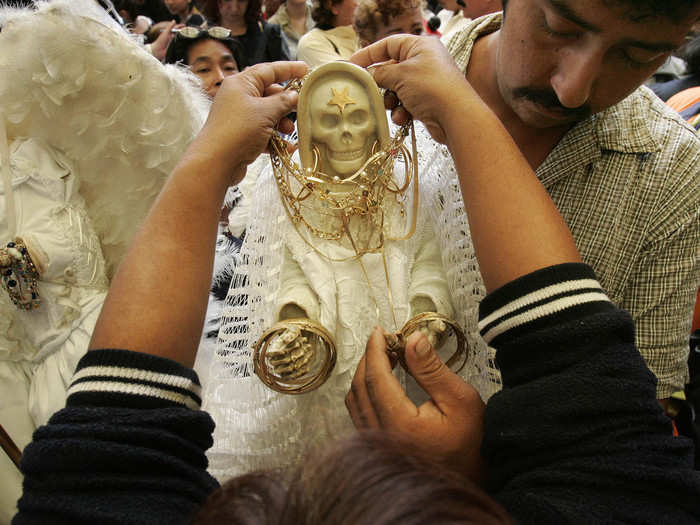
Source: AFP
The white lady is a one-stop devotional shop ... for narco-traffickers seeking harm on enemies or protection for themselves, businesses seeking a prosperous opening, mothers worried about a child's health or a daughter's job prospects, even for young women, worrying about a roving husband or boyfriend.

Source: The National Catholic Review
Santa Muerte is also popular with people throughout Mexico for a variety of social and historical reasons.
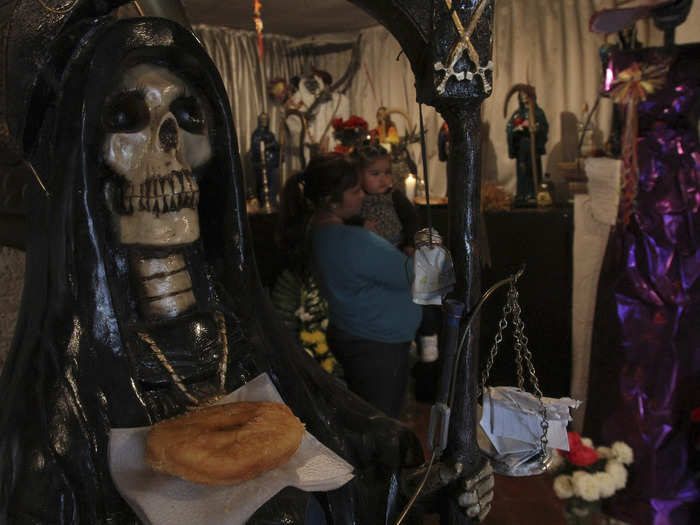
She may reflect the Mexican people's long-held fascination with death, a sentiment underscored by the country's Day of the Dead celebrations, according to Grillo.
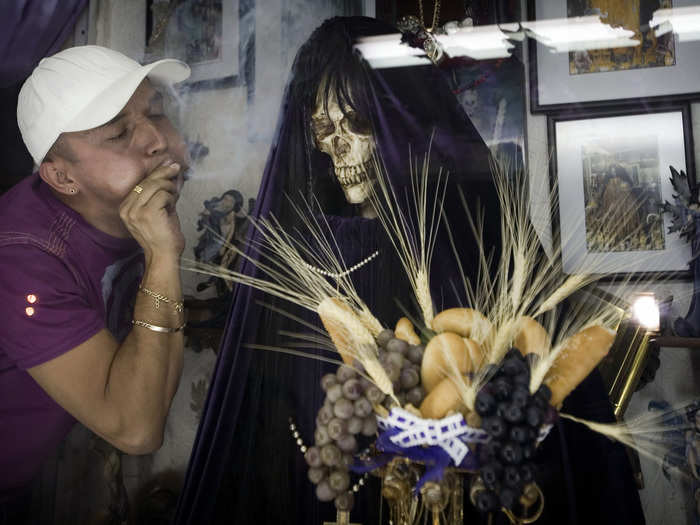
Source: "El Narco: Inside Mexico's Criminal Insurgency" by Ioan Grillo
Santa Muerte imagery may also speak to Mexicans' enduring resistance to colonialism, with the skeleton figure hearkening to Aztec-era gods, writes Grillo.
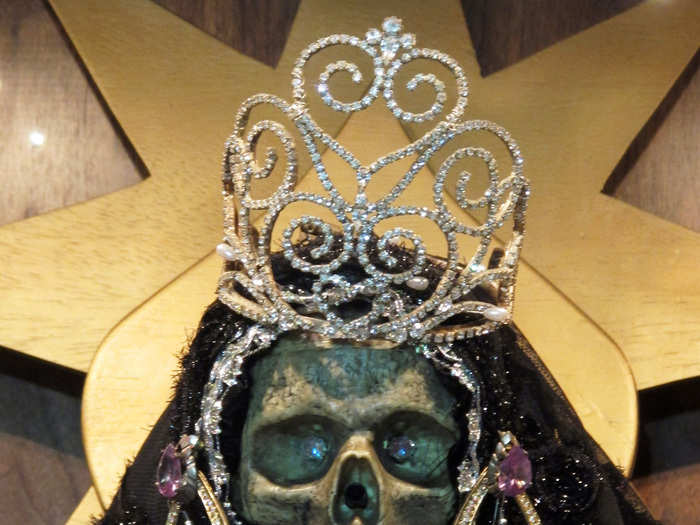
Source: "El Narco: Inside Mexico's Criminal Insurgency" by Ioan Grillo
The Catholic Church has pushed back against Santa Muerte aggressively, through the pope's admonishments to bishops during his visit to Mexico and through priests urging "the faithful not to mess with the dark and diabolical," according to Grillo.
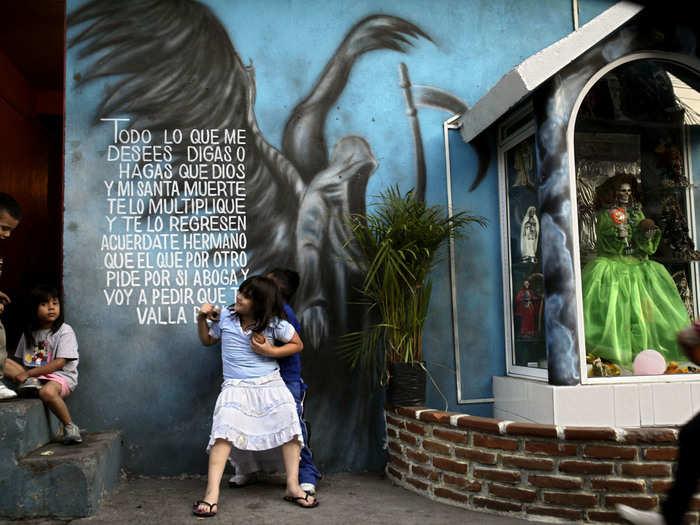
Sources: "El Narco: Inside Mexico's Criminal Insurgency" by Ioan Grillo, AFP
But Santa Muerte remains widely revered. While Mexico is home to most of those who worship her, adherents are also found in Central America and the US.
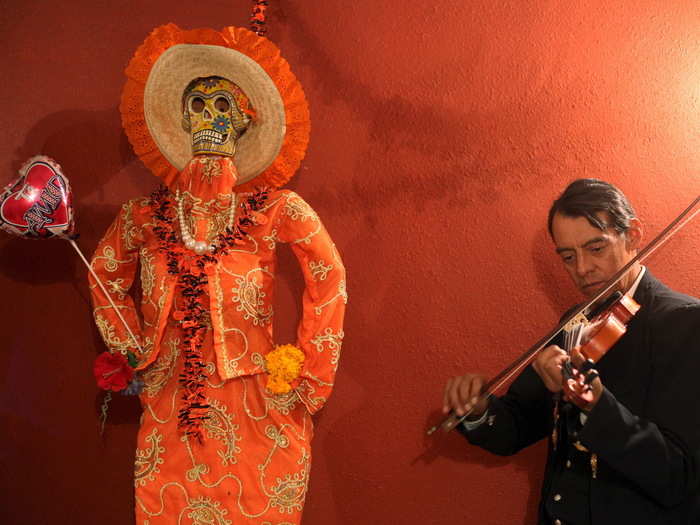
Source: AFP
For many in Mexico, their Catholic faith and devotion to Santa Muerte can coexist.
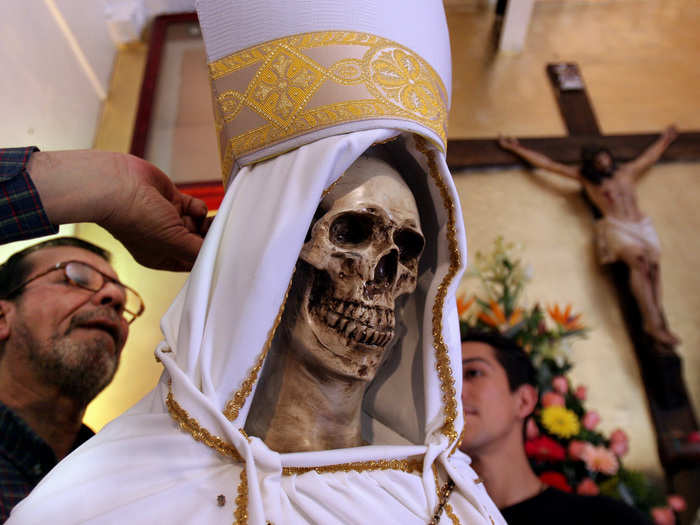
Many people here have a devotion to her and still consider themselves good Catholics," Chesnut told The National Catholic Register, "and that is a real challenge for the church.
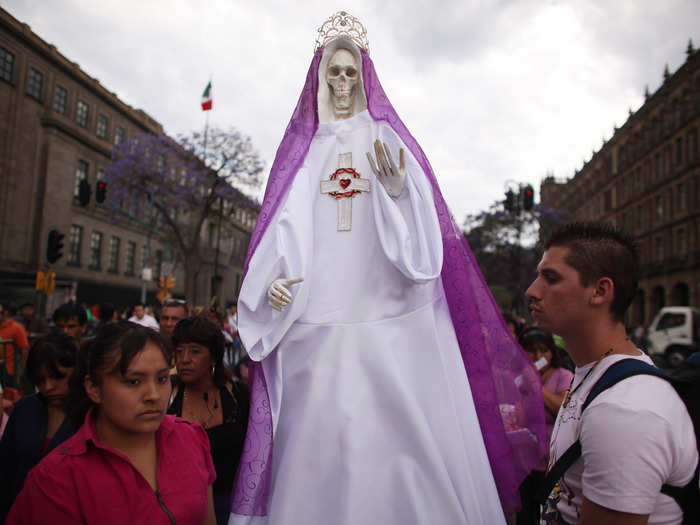
Source: The National Catholic Review
Popular Right Now
Popular Keywords
Advertisement